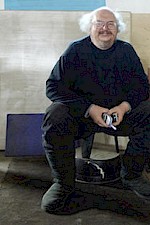Has Sound Reinforcement Destroyed Live Music?
In June, we looked at Can Recorded Music Sound Better-Than-Live? and I confessed to being a purist who prefers as little coming between me and live musicians as possible. I discussed the fact that mostly I stay away from concerts that employ what used to be called PA (Public Address) systems and are now called “Sound Reinforcement.” The exception I make to that rule is when I am interested in hearing the system as much or more than the content coming from it.
As stated in June, my reasons are aesthetic. The music simply sounds better to me when it is transparently transmitted from musician or instrument to my ears and not changed by the sound system. Sure, there are some situations where that is not practical or possible – a concert in an outdoor venue such as a stadium or one is a huge arena – but traditionally, it has been the responsibility of the performers to make themselves heard and heard musically.
The introduction some years ago of microphones and sound reinforcement to the Broadway theaters has changed both the requirements for the performers and the experience for the audience. With microphones that can be easily hidden in even skimpy clothing, any singer can appear to have a voice that can rival those in the Golden Age of Song. No longer does a singer have to be trained to project, just put a mic on. Sometimes it has been unclear to me whether I am listening to a great or weak voice since they are coming through the same speakers.
Broadway theater once required voices with discipline. Now almost anyone with star power in some field of entertainment can be seen as the star of a Broadway musical. For me, this lessens the experience. Again, perhaps I am a purist, but the hard work and training that was once required seems to be lacking and that taints the entire enterprise. Plus, the cast album sounds better at home on my system. Technique handed down from teacher to student over generations is changing.
Once Broadway audiences heard Ezio Pinza sing “South Pacific.” He reached the last seat in the theater all by himself. As did Ethel Merman, who probably reached neighboring states, as well. Today, many performers reach those seats by whispering into microphones.
I am lucky enough to live in a city with a great opera company. When I attend the Met, my preferred seats are not the traditional “Best Seats in the House” Parterre or Grand Tier where you have the best view and evenness of sound levels. My preference is in rows J-O and seats 108-112, and we aim to balance our Walsh speakers to sound like that. Today’s beautiful, but soft, voices sound great up close, and I can really hear how the singers sound.
Enjoy & Good Listening!
John
Subscribe to Ohm News & Views to get the latest posts in your inbox
John Strohbeen Author
John Strohbeen was the President and Chief Engineer of Ohm Acoustics from 1978-2023.


